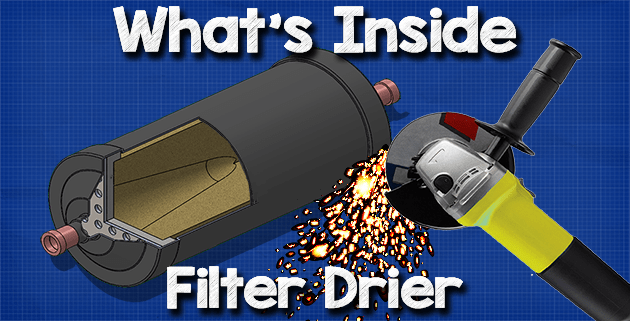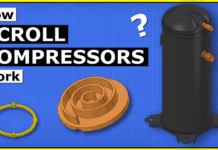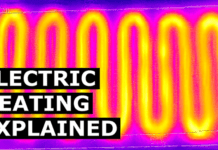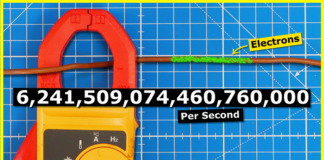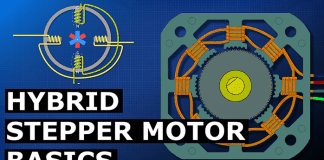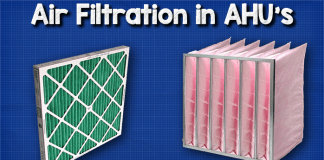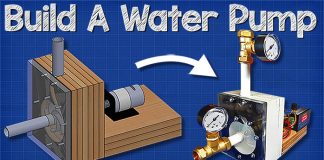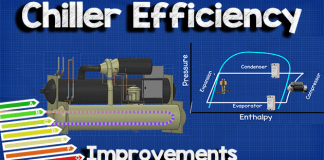How do filter driers work? in this article we’re going to be cutting open one of these filter driers to look at whats inside and learn how they work. As well as discussing the purpose of each component inside.
Watch the YouTube video at the bottom of the article
Want to learn more about filter driers? Click here to enrol on Free filter drier eLessons
Dive into Danfoss Learning and continue to discover all there is to know about filter driers and more. Create your free account to access hundreds of eLessons in 26 different languages.
🏆 Create your free Danfoss Learning account now – http://bit.ly/FilterDrierElessons
What do we use a filter drier for?
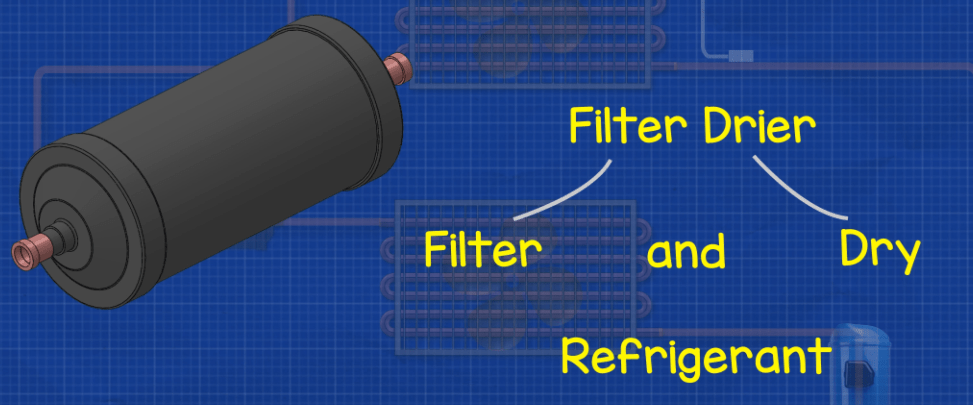
Well these are found in refrigeration systems and as you might guess from their name, their job is to filter and dry the refrigerant. They protect the refrigeration system and its components by capturing and adsorbing water particles as well as harmful solid substances, and stopping these from cycling around the system and getting into the compressors, valves, sensors etc to keeping the system running at optimal conditions.
Where do we find filter driers?
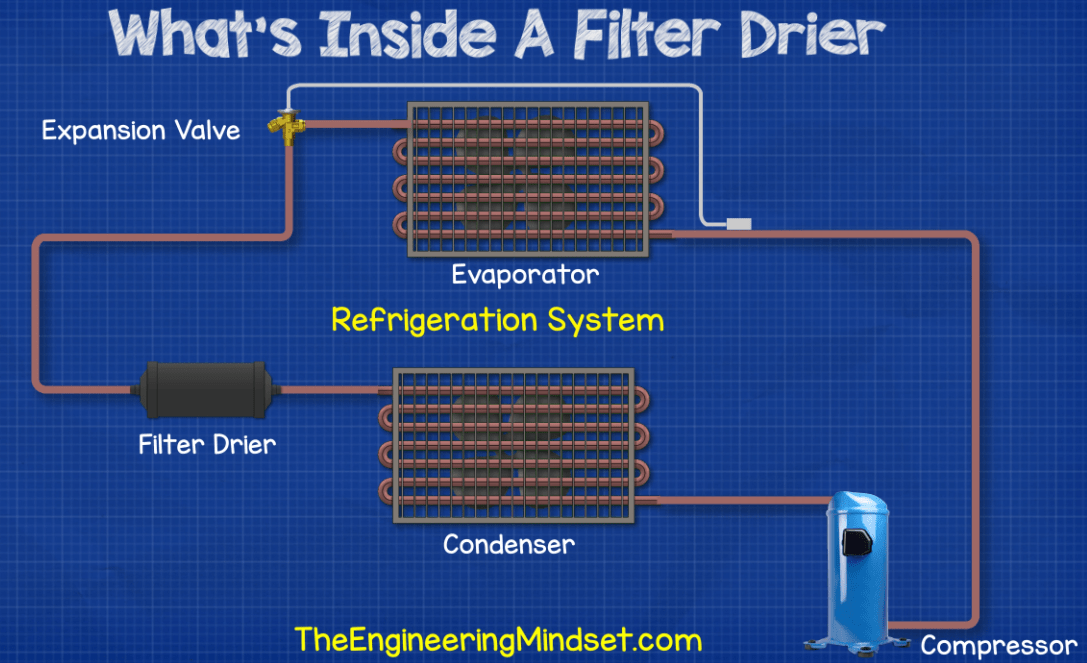
This is a very typical model filter drier and we’ll find these installed in the liquid line of the refrigeration system, between the condenser and the expansion valve.
We’ve covered how expansion valves (Thermal and electronic), heat exchangers and refrigerants work in our previous tutorials, do check those out.
On the side of the filter drier you’ll find an arrow, this indicates the direction of refrigerant flow. Some models for heat pumps might have a bi-directional filter and the arrow will point both left and right. But in this case we have a single direction, one way filter drier.
On the outside we have a powder painted surface which just prevents corrosion and the black gloss finish just gives it a premium look at feel. The casing is made from steel to give it a strong structure as this will be under some high internal pressure once connected into the refrigeration system.
At each end we have some solder connections which are either pure copper or copper plated depending on the model.

So as we remove the casing we instantly see some of the key components inside. The biggest component being the solid core, but we’ll look at that in just a moment.
Now at the refrigerant inlet end we have a large spring, the spring just pushes against both the casing and the solid core, this is there just to keep the core in a fixed position inside the casing.
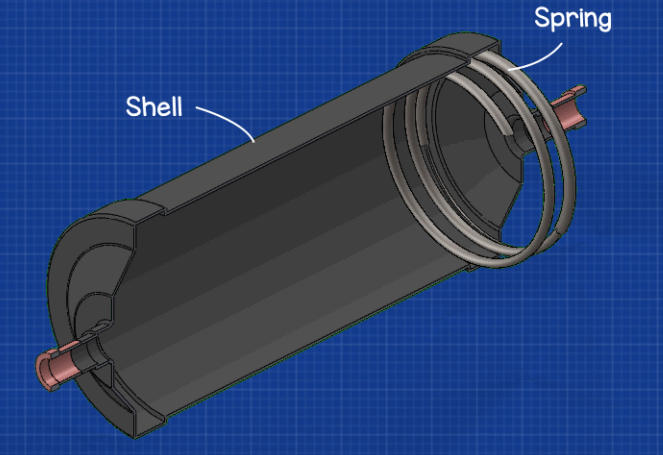
Next we have the core or the molecular sieve. This particular model has a Solid core, 80% of which is a molecular sieve and 20% being activated alumina. I’ll show you some close ups here of that porous material.
The solid cores molecular structure acts as a filter to capture any large dirt particles. The material is similar to a sponge in that it can also soak up and retain water. The aluminium oxide is added in there to capture and retain acids. Not all filter driers will have activated alumina inside them it depends on the application. So the refrigerant enters and surrounds the outside of the core then is forced to pass through it.
Notice this groove inside, the refrigerant will pass through this solid core and then collect in this groove to continue its flow.
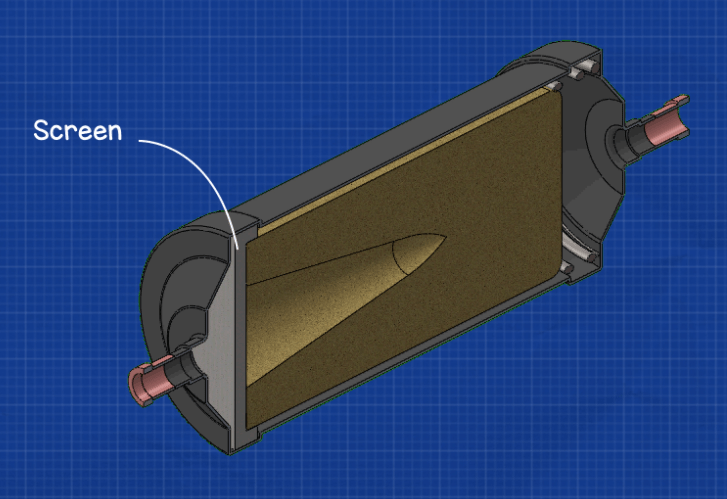
At the end of the solid core we have a screen. This polyester mat retains the smaller dirt particles which might have be able to pass through the solid core. The material is able to capture dirt particles down to 25 microns with minimal pressure drop.
After the screen we have a perforated plate, this is just there to keep all the internal parts in position, the holes just allow the refrigerant to flow to the outlet.
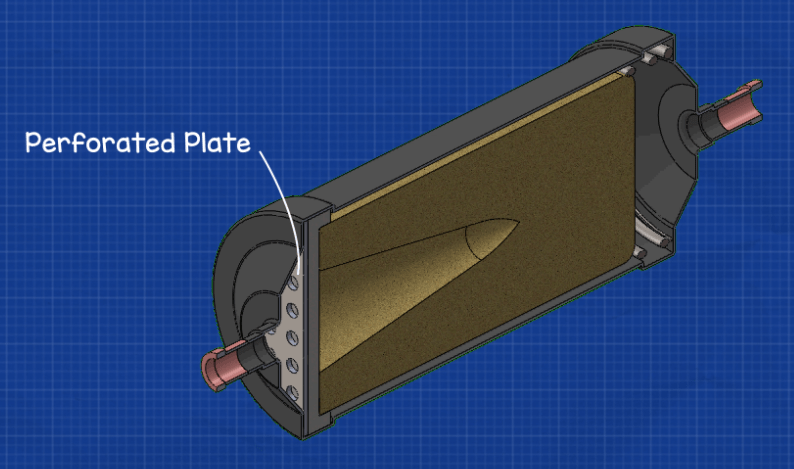
The refrigerant then leaves the filter driver and heads to the expansion valve.
So the refrigerant enters through the inlet, it passes across the spring, then surrounds the outside of the solid core. The refrigerant then passes through the solid core and as it does so the dirt, moisture and acids are absorbed, the refrigerant then collects in the groove at the centre of the core and then pass through the screen. It then passes through the perforated plate and exits the unit having been filtered and dried, it then continues to the expansion valve.

